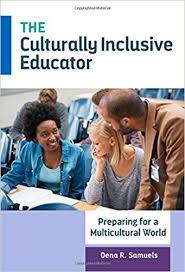Author: Adam Alter
ISBN-10: 0143124935
ISBN-13: 978-0143124931
APA Style Citation
Alter, A. (2013). Drunk tank pink: And other unexpected forces that shape how we think, feel, and behave. New York, NY: Penguin Books.
Buy This Book
https://www.amazon.com/Drunk-Tank-Pink-Unexpected-Forces/dp/0143124935
| drunk_tank_pink_activity.pdf |
Can the color pink calm rowdy prisoners? Yes! Drunk tank pink is the affectionate name for the bubblegum-pink shade of paint used in jail cells in San Jose, CA in the 1980s. Soon after, the use of the color pink spread like wildfire in efforts to change people’s behavior. Drunk Tank Pink investigates how context effects and hidden forces shape our thoughts, feelings, and behaviors. It is filled with studies that leave you wondering just how much we are impacted by the world within us, the world between us, and the world around us.
The World Within Us: The world within us consists of names, labels, and symbols.
Sometimes our names can determine our destiny. For example, Carl Jung “young” studied youth and rebirth. Freud, which means joy in German, studied the pleasure principle. Usain Bolt became the fastest man in the world. If our name is easy to pronounce, it opens doors and makes us money. People tend to prefer the letters in their name. For instance, people with a name starting with K donated more for Hurricane Katrina recovery because they associated the storm with their name. Names can be powerful.
Labels also make our lives easier and help us make decisions. Color labels shape how we see the world. Our reality is also influenced by the language we speak. Language impacts our perception of personal space, physical space, and time. Sometimes even meaningless labels gain meaning and impact us. For example, north is thought of as being above. Individuals are more willing to travel five minutes south because north implies uphill and requiring more effort and gas. According to the framing effect, the wording of a statement impacts decision making. Labels can distort eyewitness memory and reshape our social interactions.
Symbols are also a powerful influencer. Symbolic images can be more powerful than words. For example, students were exposed to negative symbols that changed their later impressions. Company logos set off a network of associations, such as The Apple Company enhances our creativity. Money is a powerful symbol. As we watch money be destroyed, possibilities seem to disappear. Nationalism and religion are also powerful symbols. The American flag can unite or inspire aggression, depending on the association when primed. Being reminded of religion primes an individual to be honest in their future interactions. The world within us shapes a diverse range of outcomes.
The World Between Us: We are surrounded by others, socially motivated, and view life through a cultural lens.
Being surrounded by others changes our behavior. Adding a picture of eyes above an honesty box by communal coffee influences the amount of contributions. Posting ads stating “We’ve got our eyes on criminals” lowers criminal activity. We like to be surrounded by others, and social isolation has significant effects. We’ve learned this from case studies, such as Genie, a girl who was isolated for the first 13 years of her life, and individuals living underground to simulate the isolation astronauts might experience. Our behaviors change when we are forced to compare ourselves with others. A utility company reduced electricity use by showing customers how much other households use. Noor, a Turkish soap opera, changed the Arab world by showing viewers marital benefits of gender equality. We feel connected to others when we mimic each other. While two people talk on the phone, they often synchronize their steps by following the rise and fall of their voices. Performing in front of others can be exhilarating, but it depends on the ease of the task. Students did better on the SAT with fewer competitors. Also, having too many people around can be problematic as found in the bystander effect.
According to Abraham Maslow, we are socially motivated. After our physiological needs are met, we seek safety. Men are more likely than women to die from accidental causes because they take greater risks. Next, we need the social support of love and belonging. A nasal spray, called Liquid Trust, applied before important social events can lead to feelings of trust. The spray contains oxytocin, which is believed to promote positive responses for in-group members. A photo of a loved one produces the same response as oxytocin by activating the same reward centers in the brain. Amazingly, imagined social support is just as effective as real support. The top of Maslow’s hierarchy is self-actualization, consisting of self-acceptance and moral clarity. Individuals donate more when asked to recall childhood memories. People are also more honest when forced to stare at their mirror image.
Everyone sees objects and places through a cultural lens. This is evident with the famous Muller-Lyer illusion. Bushmen from southern Africa and tribes from North Angola and Ivory Coast failed to fall for the illusion because they were raised in rounded houses that did not possess angled lines. Studies have also explored the impact of culture and focus. Chinese and American participants studied photos with a central background. Americans focused their attention on the main object and less time on the background, whereas Chinese participants focused more on both the object and background. We see people, math, art, and honor through a cultural lens. There are also culture-bound disorders. Anorexia is concentrated in the wealthiest regions of the world. While the hikikomori disorder of lacking any social contacts is a disorder almost exclusively limited to Japan. Being immersed in another culture impacts the person we become. The social world we live in shapes a diverse range of outcomes.
The World Around Us: We are shaped by colors, locations, and the weather.
Colors influence our world by shaping how we think and behave. Blue lights in Scotland have decreased criminal activity, and blue lights in Japan have stopped suicide attempts. We have learned to associate colors and objects. That blue light mimicked a police car’s flashing lights. Colors can impact us at work or school. Students have learned to fear red ink. While using a red pen, teachers found more errors. At the same time, writing in red ink students produced more mistakes. Even more confusing, depending on the intellectual task red can be beneficial. Proofreading or memorizing a list of words (tasks that both require attention to detail) presented against a red background becomes beneficial. Color impacts sports. Athletes who wear red uniforms win more often, while athletes who wear black are seen as more aggressive. Colors have even been associated with morals. We associate lightness with morality and darkness with immorality. Colors influence through association, but also biology. Red is associated with love because it signals sexual arousal. Blue halts production of melatonin.
Locations also influence our thoughts, feelings, and behaviors. Outgoing children became hostile, anxious children after minutes in an overcrowded room. Living in packed quarters hinders generosity and diminishes quality of life. Overcrowding creates noise, and the constant hum stifles creativity and learning. Children raised on lower floors, which tend to be loud, struggled more to read than their peers living on higher floors. Natural environments can bring positive effects. Patients recover faster in rooms facing a small courtyard. Children who spent time outdoors were more relaxed, focused, happier, and friendly. Even children who sat indoors with natural views were calmer. Japan and Germany have already been using natural therapy. The Japanese practice forest bathing- walking for a long time while inhaling woodsy scents. The Germans physically exercise in forest clearings. Natural environments promote calmness and well-being because they expose us to low levels of stress.
Even the weather influences us. Civil conflicts have been driven by changes in climate. Southern states are more prone to violent crime. On hot days, domestic violence rates increase. Long cold winters breeds love. Social isolation creates a literal chill. Students held a cup of hot coffee or iced coffee while riding an elevator and were asked to rate another person. If they held the hot coffee cup, they rated the individual as warmer and friendlier (not attractive or strong). The sensation of physical warmth alleviates the need for social contact. The weather also influences our well-being. Rain, snow, and darkness are responsible for great unhappiness. However, a sunnier day brings on mental stupor. Individuals recalled three times as many items on rainy days as sunny days. Gloomy weather hampers mood, but it makes us think more deeply and clearly. The world around us shapes our thoughts, feelings, and behaviors.
Think about the world within us, the world between us, and the world around us. Just how much of you has been determined by your environment? If you want to know more, this is a must read!
Other Related Resources
Adam Alter Webpage
http://adamalterauthor.com/drunk-tank-pink
Color Matters
https://www.colormatters.com/color-and-the-body/drunk-tank-pink
NPR: “Drunk Tank Pink” Find Clues To Behavior
https://www.npr.org/2013/04/05/176339686/drunk-tank-pink-finds-clues-to-behavior
Scientific American- MIND Reviews: Drunk Tank Pink
https://www.scientificamerican.com/article/mind-reviews-drunk-tank-pink/?redirect=1
Psychological Figures and Concepts
Alfred Adler
Solomon Asch
Darley and Latané
Jane Elliott
Sigmund Freud
Genie
Kitty Genovese
Harry Harlow
William James
Carl Jung
Wolfgang Köhler
John Locke
Elizabeth Loftus
Abraham Maslow
Hermann Rorschach
Stanley Schachter
Normal Triplet
Benjamin Whorf
Bob Zajonc
Biologically predisposed
Chameleon effect
Circadian rhythm
Conformity
Context effects
Correlation
Cortisol
Critical period
Culture
Diffusion of responsibility
Discrimination
Distress vs. Eustress
DSM
Evolution theory
Experiment
Feeding and eating disorders
Flashbulb memories
Hawthorne effect
Individualism vs. collectivism
Insula
Melatonin
Müller-Lyer illusion
Necker Cube
Oxytocin
Phobias
Phonemes
Pineal gland
Placebo
Schizophrenia
Seasonal Affective Disorder (SAD)
Self-fulfilling prophecy
Serotonin
Sleep paralysis
Social facilitation
Social inhibition
Social norms
Stigma
Stroop task
Subliminal priming
Temporoparietal network
Testosterone
Visual cortex
Well-being


 RSS Feed
RSS Feed